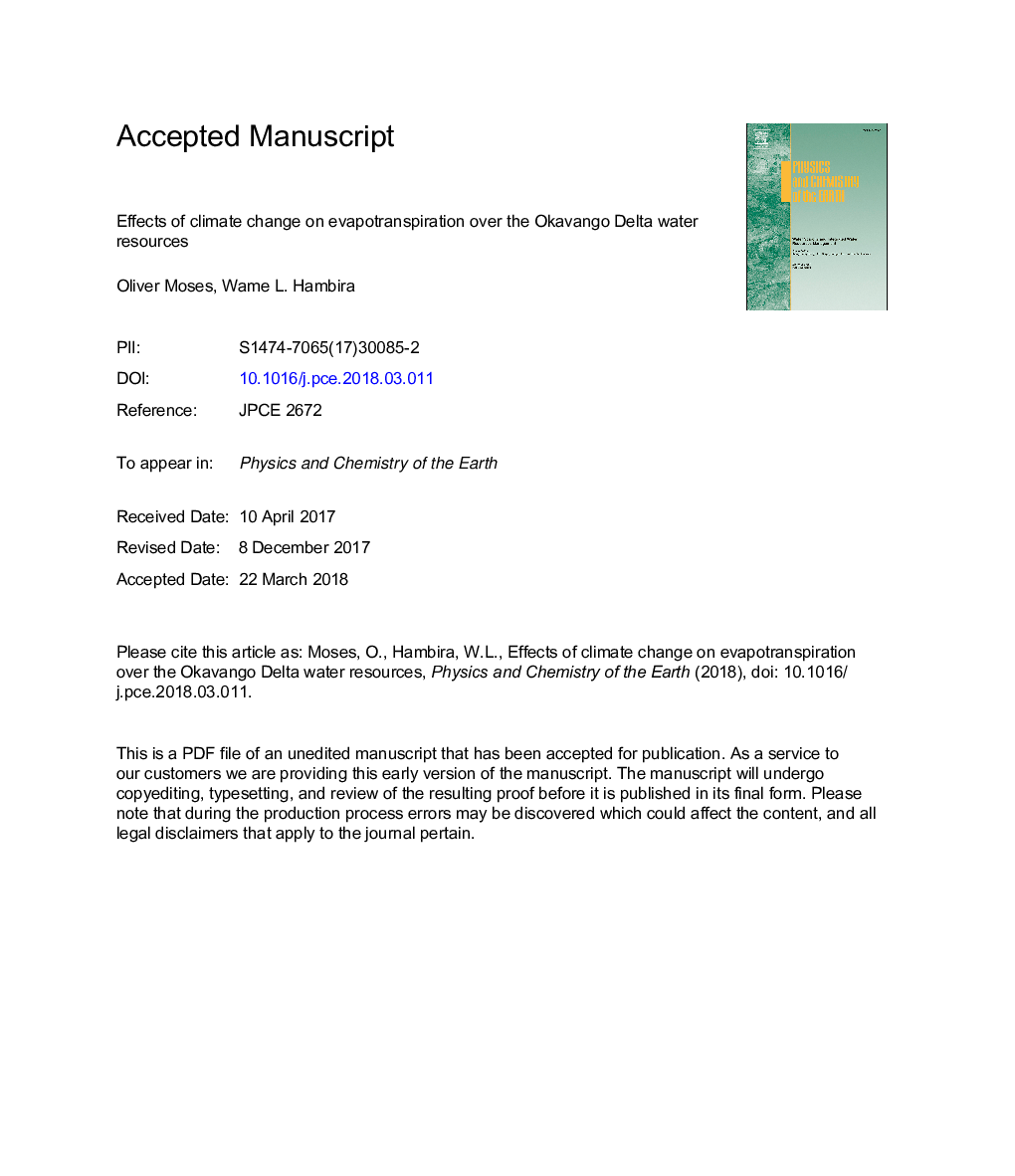| Article ID | Journal | Published Year | Pages | File Type |
|---|---|---|---|---|
| 8912340 | Physics and Chemistry of the Earth, Parts A/B/C | 2018 | 11 Pages |
Abstract
In semi-arid developing countries, most poor people depend on contaminated surface or groundwater resources since they do not have access to safe and centrally supplied water. These water resources are threatened by several factors that include high evapotranspiration rates. In the Okavango Delta region in the north-western Botswana, communities facing insufficient centrally supplied water rely mainly on the surface water resources of the Delta. The Delta loses about 98% of its water through evapotranspiration. However, the 2% remaining water rescues the communities facing insufficient water from the main stream water supply. To understand the effects of climate change on evapotranspiration over the Okavango Delta water resources, this study analysed trends in the main climatic parameters needed as input variables in evapotranspiration models. The Mann Kendall test was used in the analysis. Trend analysis is crucial since it reveals the direction of trends in the climatic parameters, which is helpful in determining the effects of climate change on evapotranspiration. The main climatic parameters required as input variables in evapotranspiration models that were of interest in this study were wind speeds, solar radiation and relative humidity. Very little research has been conducted on these climatic parameters in the Okavango Delta region. The conducted trend analysis was more on wind speeds, which had relatively longer data records than the other two climatic parameters of interest. Generally, statistically significant increasing trends have been found, which suggests that climate change is likely to further increase evapotranspiration over the Okavango Delta water resources.
Related Topics
Physical Sciences and Engineering
Earth and Planetary Sciences
Geochemistry and Petrology
Authors
Oliver Moses, Wame L. Hambira,
